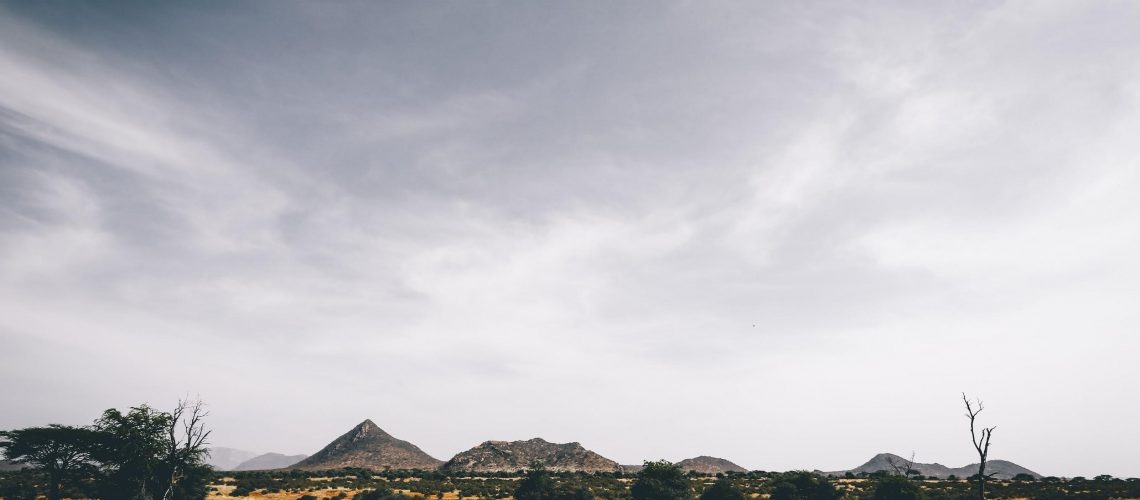How are developing countries coping in a warming world?
In Meru County, in the central region of Kenya, 48-year-old Lucy Kigunda works as a farmer as a part of the Ithondio Women’s group. With the assistance of the Food and Agriculture Organisation of the UN (FAO) the group has been learning how to plant drought-tolerant crops, retain the moisture in soil, and improve post-harvest storage.[i] The fact that Arid and Semi-Arid lands make up 80% of the country means that this type of conservation agriculture is becoming crucial to prevent declines in crop production. But in a warming world, how long do developing countries have before these measures simply aren’t enough?
Greenhouse gas concentrations have been increasing since the industrial revolution. This has a direct link with increasing global temperatures, which have numerous disastrous impacts on Earth’s systems. Sea levels are rising, oceans acidification is increasing and agricultural systems are in peril. Climate change seems at the forefront of our social consciousness. Greta Thunberg is inspiring today’s youth to take control of their futures; mainstream media is finally taking notice and summit after summit our world leaders look for feasible solutions. However, we’re not all on an equal footing to face this challenge. And often it’s those who are least responsible, who consume the least and who benefit the least from environmental degradation, that are most vulnerable to its effects.
A tool called the ND-Index is used to rank countries’ vulnerability to climate change. Kenya is ranked as the 36th most vulnerable country and the 35th least ready to combat the effects of climate change.[ii] This means that Kenya is ill-equipped to face the potential harmful consequences of increasing global temperatures. These include:
- Shifting weather patterns, which can threaten food production;
- Risk of increased flooding in some areas (increasing threats of waterborne diseases);
- Coastal erosion.[iii]
In Kenya, over ten million people live with chronic food insecurity, meaning they don’t have reliable access to enough nutritious food. Already, increased variability in weather patterns means that sometimes the rains of Kenya’s first long season aren’t sufficient to support harvest, especially in Kenya’s Arid and Semi-Arid Lands.[iv] This means that any declines in food production will be catastrophic. Other parts of the country, such as the area around the Rift Valley, are now experiencing more extreme weather events such as flooding, which destroys infrastructure and food sources and spreads diseases such as cholera.
We must also consider some of the more indirect impacts of climate change for Kenya. Although its ranking has improved in recent years, Kenya is placed 148th out of 188 countries for its Human Development Index (HDI).[v] The HDI measures things like education, life expectancy and standard of living, in order to indicate different levels of social and economic development. Kenya also ranks low for gender equality, and just as different countries experience differing levels of vulnerability to the effects of climate change, different groups within society are similarly disadvantaged; it is the marginalised who will suffer the most as we enter an environmental crisis. When low-income families are struggling to meet their basic needs, the costs of educating their children becomes too much of a burden. As girls’ education is often undervalued, to begin with, this puts their futures at risk. Similarly, whilst women provide 80% of the labour for crop production, they only own 1-5% of land titles and capital.[vi] If violence and conflict emerge over water resources, it is women and children, particularly in rural areas, who will be the most at risk.
The government is taking steps to address the climate crisis, including:
- The expansion of geothermal, solar and wind energy production;
- The enhancement of energy efficiency;
- Increasing forest tree cover;
- Building low carbon transport infrastructure;
- Investing in climate-smart agriculture and sustainable waste management systems.[vii]
According to the Organisation for Economic Co-operation and Development (OECD), Kenya’s plan of action is ambitious, and won’t be possible without international assistance. However, the politics surrounding climate change is fraught with opposing interests, divergent theories and a seemingly never-ending list of questions we must answer. Who is responsible for the current situation? Who should have to fix it? Should blame be assigned on the basis of our ancestor’s actions? And do we have more of a duty to citizens of other countries living now, or to our own future generations? While we take into account issues of distributive and intergenerational justice in the West, we must also call into question our current conceptions of ‘growth’ and ‘progress’.
The answers to these questions are numerous and contested, but we do know that business as usual isn’t an option. In developed countries, our structural dependency on resource extraction, coupled with our culture of consumerism, is already having an impact on global ecosystems. We have taken what we wanted from the Earth, we have grown our economies and we’ve reached what are arguably some of the highest standards of living in human history.
Developing countries haven’t been so lucky. The impacts of colonialism persist and weak institutions and economic constraints limit their ability to mitigate the effects of climate change. This is a complex issue, one that has grabbed the attention of experts in almost every field. As we navigate the current political landscape, it’s clear that our ability to extend our empathy, our alarm and our resolve across borders will be a significant factor in determining what the future looks like.
References
[i] “Conservation Agriculture In Kenya: Beating Drought And Poor Harvest”. Food And Agriculture Organization Of The United Nations, 2020. http://www.fao.org/fao-stories/article/en/c/1100298/.
[ii]Gain-new.crc.nd.edu. 2020. Kenya | ND-GAIN Index. [online] Available at: <https://gain-new.crc.nd.edu/country/kenya#:~:text=The%20high%20vulnerability%20score%20and,the%2035th%20least%20ready%20country.> [Accessed 14 August 2020].
[iii] “Climate Change”, Un.Org, 2020, https://www.un.org/en/sections/issues-depth/climate-change/.
[iv] “Climate-Fact-Sheets – Climate Service Center Germany”, Climate-Service-Center.De, 2020, https://www.climate-service-center.de/products_and_publications/fact_sheets/climate_fact_sheets/index.php.en.
[v] United Nations Development Project, Human Development Report 2019, Inequalities In Human Development In The 21St Century, 2019, http://hdr.undp.org/sites/all/themes/hdr_theme/country-notes/KEN.pdf.
Written by: Anna Balis


